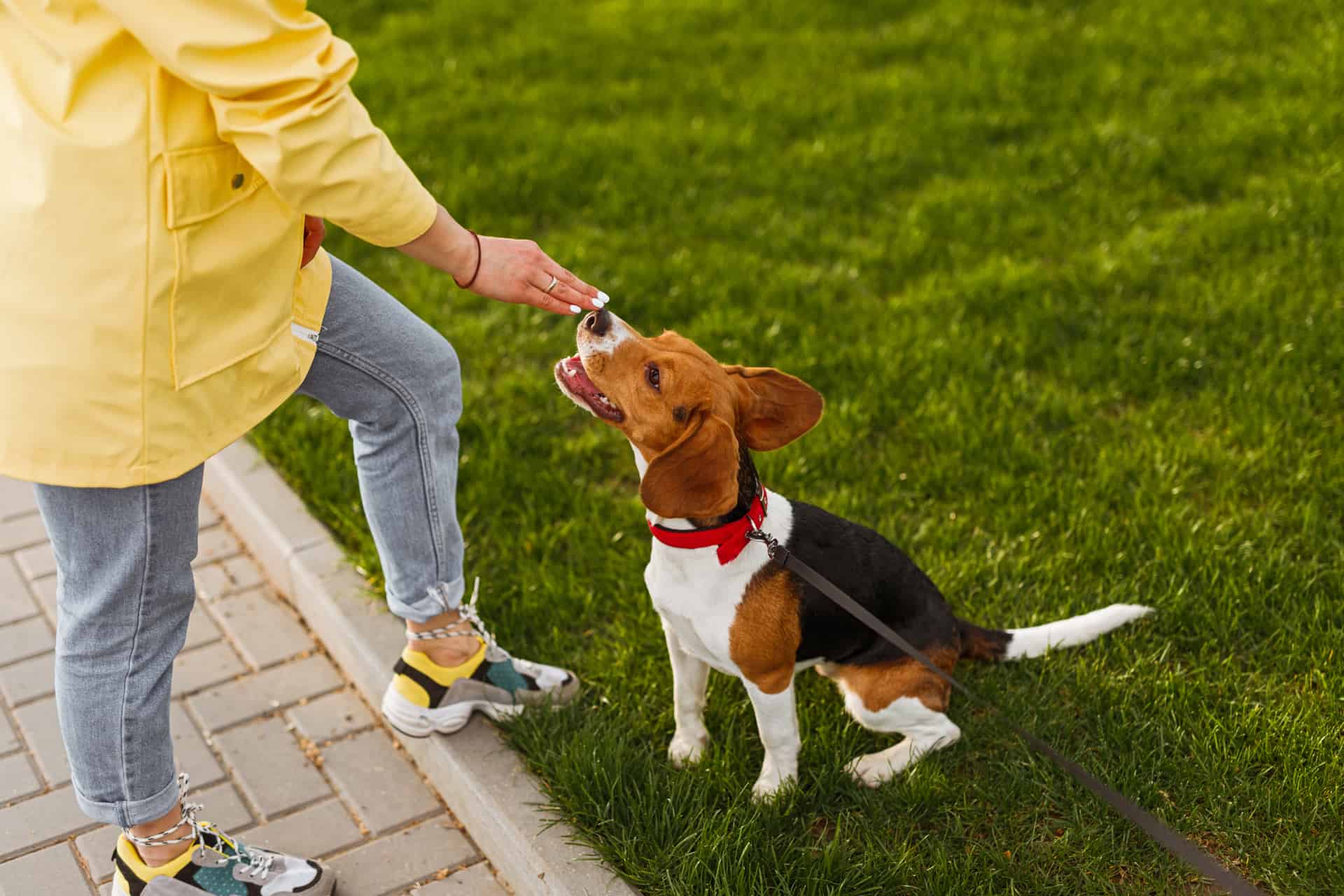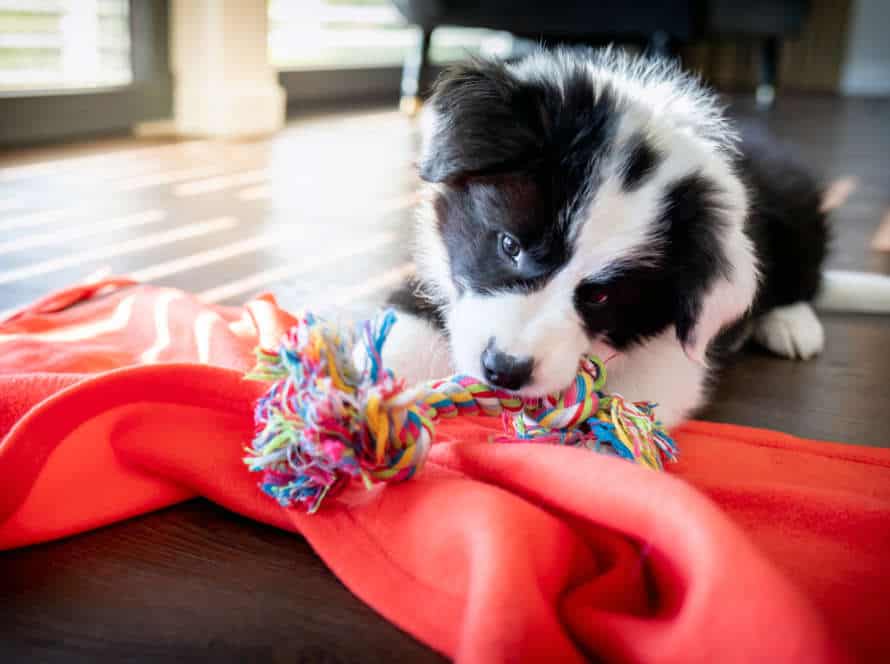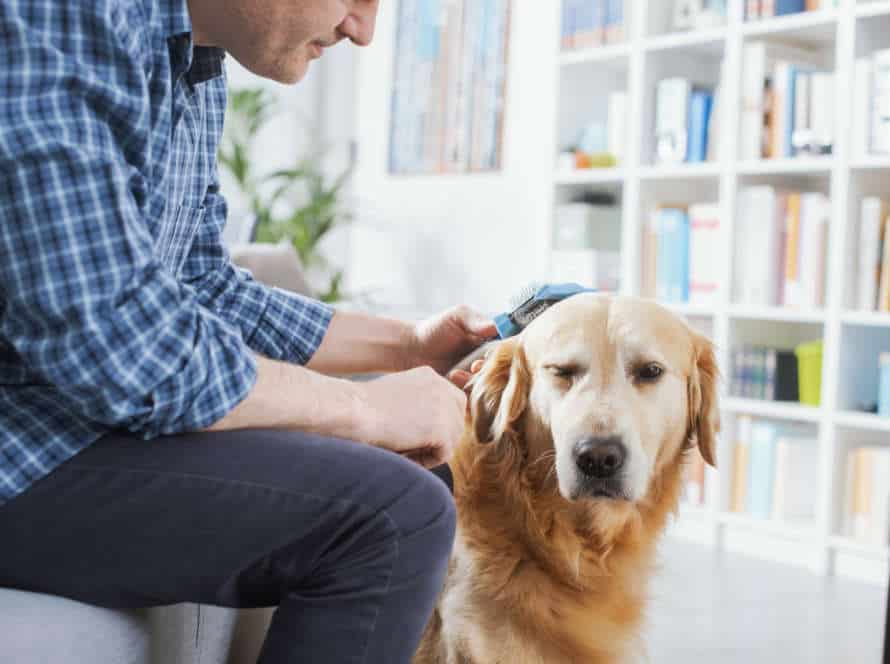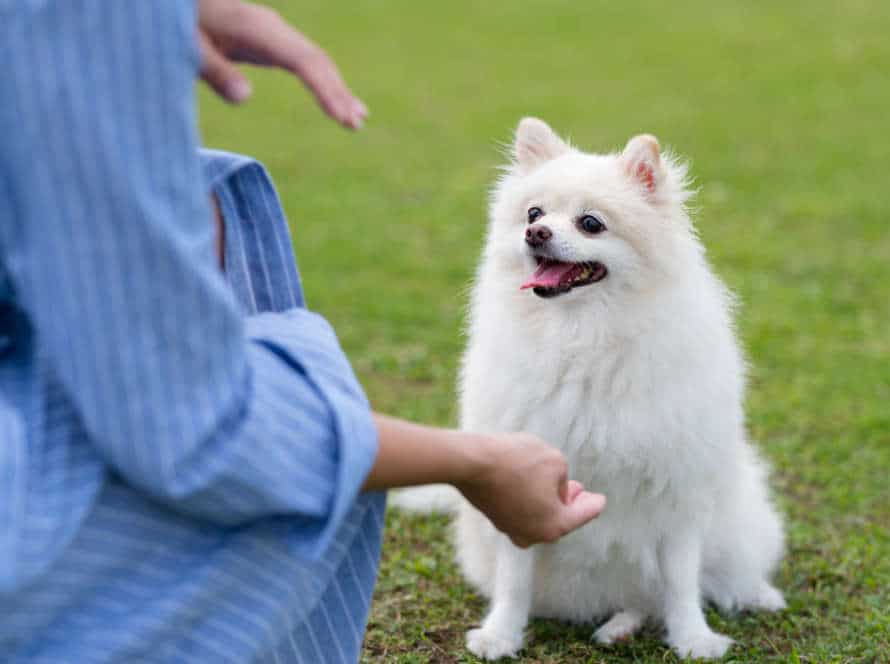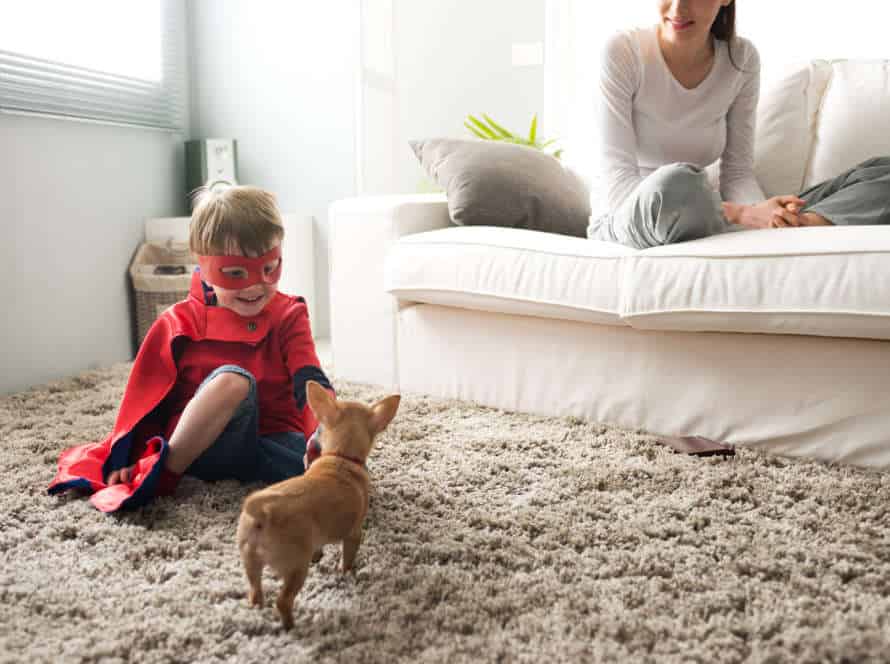Preparing Your Puppy for Leash Training Success
Leash training is a must for every pup. So, make it a fun and rewarding experience with these steps:
- Get your pup used to wearing a collar or harness. Let him wear it at home and increase the time gradually. This way he gets used to the feeling of something around his neck.
- Attach the leash and let him drag it around the house under your supervision. This helps him get used to its weight and feel, avoiding leash fright.
- Practice walking on leash indoors before moving outside. Let your pup get used to walking beside you while wearing the collar/harness and being tethered to the leash. Use treats to encourage and reward him.
- Be patient. Leash training takes time and patience. Every pup is different. Celebrate small wins and don’t get discouraged! With practice and positive reinforcement, your pup will soon be ready for outdoor adventures.
Puppy Development and Readiness for Leash Training
Leash train a pup? It can be tough! But with the right plan, it’s doable. When it comes to leash trainin’, know the pup’s development. This is the key to success. So let’s learn about pup development and when leash trainin’ is best!
Ideal age to start leash training
The perfect age for leash training your pup is between 12-16 weeks. This is when pups are in their most formative stage and have enough immunizations to go on walks outside!
Before you begin, there are a few things you should do:
- Introduce the collar or harness gradually and make it a positive experience.
- Practice basic commands, like “sit,” “stay,” and “come,” using positive reinforcement.
- Pick a comfortable, suitable leash and adjust it to fit your pup’s size.
- Start leash practice in a calm, safe area, like your backyard or a tranquil park. Your pup can get used to the feeling of a leash.
- Always use positive reinforcement and have patience – each pup learns at their own speed.
Pro Tip: Leash training could be tough and take time. Stay consistent with the training and use positive reinforcement!
Assessing your puppy’s behavior and temperament
Assessing your pup’s behavior and temperament is very important before leash training. Here are some things to consider:
- Age: Don’t start training until your puppy is at least 8 weeks old.
- Health: Ask a vet if your pup has any health issues that could affect training.
- Temperament: Get a professional trainer to assess your pup’s temperament.
- Socialization: Socialize your pup before leash training.
By considering all these factors, you can make sure that training is positive and fun for both you and your pup.
Necessary pre-training behaviors to focus on before leash training
Before leash training, it’s important to do some pre-training behaviors. These are:
- Teach pup to walk beside you, no leash.
- Teach pup basic commands like “sit,” “stay,” and “come.”
- Reward pup with treats and praise for good behavior.
- Introduce pup to leash and collar gradually. Let them sniff and explore. Wear them for short periods each day.
Focusing on these pre-training behaviors will make leash training easier. This will help your pup learn quickly and build a positive relationship between you and Fido.
Equipment Needed for Puppy Leash Training
Leash training your pup can be a great step forward. But you must have the right equipment! Let’s look at the necessary items:
- Lead
- Collar
- Treats
- Patience
Let’s begin!
Finding a comfortable leash and harness
For your puppy’s leash training to be successful, it’s essential to find a comfy leash and harness. This should not just keep your pup from escaping, but also provide safety and ease.
When selecting a leash and harness for your pup, here are a few things to consider:
- Size and Fit – Ensure the leash and harness fit your pup’s size and body shape without causing chafing or discomfort.
- Material and Durability – Pick something sturdy and long-lasting that can handle everyday wear and tear.
- Comfort – It should not cause tightness, chocking, or discomfort around your pup’s neck or chest.
- Style and Design – Pick one that fits your pup’s personality and is easy to put on and take off.
Remember, the right leash and harness can make or break your puppy’s leash training experience. So, choose wisely!
Types of leashes and the benefits of each
Choosing the ideal leash for your pup is an important part of training. You should understand the advantages of each kind of leash to make a wise selection. There are 4 types of leashes:
- Standard Leash: This is the most typical leash, usually made of nylon, cotton or leather. It offers maximum control and is great for obedience training.
- Retractable Leash: This leash extends and shortens as your puppy moves, allowing them more freedom. It’s great for recreational activities and outdoor training, but not in crowded places.
- Chain Leash: A chain leash is tougher and more hard-wearing than a standard leash, making it perfect for larger, active puppies. It’s also great if your pup enjoys chewing on the leash.
- Martingale Leash: This leash distributes pressure around your pup’s neck evenly, making it secure for training dogs with thick necks, or breeds like greyhounds with narrower necks. It’s best for dogs that pull hard on the leash, helping them learn to walk without tugging.
Pro Tip: Pick the leash that fits your pup’s personality and behavior for a successful leash training experience.
Choosing the right collar for your puppy
Selecting the perfect collar for your puppy is very important. It will keep them safe and comfortable. There are various types of collars available. They are:
- Flat collars: great for everyday use. They come with a buckle so they can easily be adjusted.
- Martingale collars: can prevent pups from slipping out.
- Slip collars: work well for training dogs that require mild corrections.
- Harness collars: great for dogs that pull on their leash. The pressure is spread across their chest instead of their neck.
Consider your pup’s size, behaviour and training needs when choosing a collar.
Basic Puppy Leash Training Techniques
Leash training your pup? It’s an adventure! With the right tricks, your pup can learn how to walk beside you on the leash. To make the training successful, you’ll need the correct supplies. Plus, start off with basic steps. Here’s the basics of puppy leash training.
Starting indoors and gradually increasing difficulty
For leash training success, start indoors. This can be done by introducing the puppy to their collar and leash inside the house or apartment. Keep it on for a couple of days until they’re used to it.
Next, train them basic commands like ‘sit’ and ‘stay’. Give rewards when they do well.
Move outside to a quiet park or a well-fenced yard. Increase difficulty by trying different environments with more distractions.
Remember to use positive reinforcement in leash training. Praise and treat them for good behaviour.
Positive Reinforcement style vs dominance and submission style
When it comes to leash training a puppy, positive reinforcement is better than dominance and submission.
Positive reinforcement means rewarding good behavior, and not paying attention to bad behavior. This teaches the pup that good behavior gets good things.
Dominance and submission is about using physical force, punishment, and acting like an alpha to make the pup obey. This can cause fear and aggression, and ruin your relationship.
Tips for positive reinforcement:
- Use treats and praise as rewards.
- Ignore negative behavior like leash-pulling.
- Keep your pup close with a short leash.
- Practice in a quiet, familiar place before trying in public.
- Be patient and use positive reinforcement to have a successful leash-training experience.
Using treats and verbal cues to reinforce appropriate behavior
Give your pup treats and verbal cues to reward good behavior during leash training.
Say “good” when they do the right thing, like walking without pulling.
This associates the word with the desired action.
Reduce treat frequency as your pup gets better at it.
Be patient and positive.
It might take time to understand.
Consistency and praise are key to success.
Consistency and Patience for Puppy Leash Training
Leash training your puppy can be a real challenge. But it’s an important part of owning a pup. To make it successful, you need to be consistent and patient. With the right approach, you’ll get a well-trained pup and the satisfaction that comes with it. Here’s the best way to go about it:
Understanding that each puppy’s training journey is unique
Each pup is one-of-a-kind, so leash training should be done with persistence and tolerance for success.
Some may learn in a few days, while others may need weeks of practice. It’s important to be aware of your pup’s nature and how fast they learn.
Staying consistent is necessary for leash training. Develop a routine and stick to it. Use rewards to praise good behavior and avoid punishing bad behavior.
Patience is also needed. Don’t push or force your pup if they are scared or reluctant. Patience, consistency and rewards can help any pup learn to walk on a leash.
Pro Tip: If you have difficulties or worries about your pup’s behavior, seek professional help from a dog trainer. They can provide tailored advice and support to make sure your pup succeeds.
Focusing on consistent repetition of training exercises
Puppy leash training needs consistent repetition. Stay patient and follow the steps.
- First, let them wear the leash and collar inside the house for a few minutes. This helps them get used to it.
- Then, begin with short training in a quiet place, with no distractions. Positively reinforce and reward good behavior, like walking with you and not pulling the leash. Discourage bad behavior, such as barking, pulling, or lunging.
- Gradually increase the training difficulty and duration. Be patient, consistent, and calm. Reward good behavior with treats and affection.
Eventually, your puppy will learn how to leash-walk and look forward to it.
Celebrating small successes and taking time for breaks for both the puppy and the trainer
Leash training your pup? Celebrate the small successes, take breaks, and show patience! This is essential for focus, motivation, and energy.
Acknowledge and reward your puppy for every successful leash training session, no matter how small. It builds their confidence and motivates them to keep trying.
Short breaks are great for relaxation and recharging. A few minutes of playtime or water can help them stay energized and focused.
Stay consistent and patient. Pups learn at their own pace, so stay calm and positive!
Remember: Short training sessions prevent your pup from getting overwhelmed or bored. Celebrate successes, take breaks, and be patient. These are the keys to successful leash training!
Troubleshooting Common Puppy Leash Training Issues
Leash training your pup is key to their growth and development. It not only keeps them safe, but also makes your bond stronger. Even when you’ve done your best to prepare, there can be hiccups. Here are the usual issues and solutions to try.
Addressing leash biting and chewing
Pups get hyper and like to chew and play with whatever they come across – including their leash. It’s important to manage leash-biting and chewing so your pup learns proper walking habits.
Here are some tips:
- Start slow – let your pup wear the collar and leash for brief periods, while you supervise.
- Use treats and positive reinforcement to encourage your pup to walk by your side, without biting or chewing.
- If your pup starts biting, distract him with a toy or treat.
- Spray the leash with a taste deterrent to discourage biting.
- Give your pup enough exercise and playtime to reduce boredom and biting.
By following these tips, you’ll be able to stop leash biting and have successful leash training with your pup.
Handling puppy distractions during training
Distractions are part of puppy training. Let’s see how to manage them and help your pup stay attentive when leash training. Begin small and increase the distractions as your pup becomes more relaxed and obedient. Indoors or in a peaceful outdoor area is the best place to begin. When outdoors, pick a spot without potential disturbances. Keep the sessions brief and reward often with treats and compliments for good behavior. If your pup gets distracted, use a verbal cue or a gentle leash tug to refocus them. Refrain from scolding as it may lead to fear and anxiety in the future. Regularity is vital when handling distractions while puppy training. Stick to a routine and expose your pup to new places and activities gradually. With patience and effort your pup will learn to concentrate on you and obey despite distractions.
Dealing with timid or fearful puppies and fear-based aggression
Timid or fearful puppies may show fear-based aggression during leash training. This could be due to lack of socialization or traumatic experiences in early life. Here are some tips to help with common issues:
- Start with short sessions in a familiar, comfy environment. Then, slowly introduce new sights, sounds, and experiences.
- Use positive reinforcement to reward good behavior and introduce the leash gradually.
- No physical punishment or harsh corrections – this can worsen fear-based behavior.
- Distract and redirect your puppy’s attention from fear triggers with treats or toys during walks.
- If your puppy’s fear-based aggression continues, get help from a professional trainer or behaviorist.
Patience and consistency are key. Pro Tip: Stay positive and encouraging throughout the training process to strengthen the bond with your puppy.
Continuing Education and Reinforcement for a Leash-Trained Puppy
Introduce your pup to leash training? Done. Now, keep them on track with continuous teaching and encouragement. Here’s how:
- Use tips & tricks for successful leash-training.
- Ensure safety on walks & runs.
- Reward your pup to reinforce good behaviour.
That’s it! Your pup will have a great leash-training experience.
Advanced leash-training techniques for long-term success
Leash-training a pup requires more than just teaching them the basics. Advanced leash-training needs continuing education and reinforcement for long-term success. To help your pup, here are some tips:
- Start with basic obedience commands like “come, sit, stay and heel“.
- Do short training sessions and gradually increase the duration.
- Reward good behavior throughout the process.
- Let your pup get used to different environments and distractions to help them focus.
- Be patient, calm, and positive. Lead by example.
With the right prep, education, and reinforcement, your puppy will be ready for advanced leash-training techniques that guarantee long-term success.
Building on leash training for obedience training
Leash training is essential for obedience in puppies. But that’s not enough – further education and reinforcement is needed. Here are some tips to help you:
- Offer treats or praise for good behavior on the leash.
- Enrole your pup in obedience classes to reinforce leash training and learn other behaviors.
- Vary walking paths and environments to expose your pup to new situations and reinforce training in different settings.
- Be patient and consistent with training, reward progress and not just perfection. With practice, your pup will become well-behaved and obedient on and off the leash.
Utilizing mobile training apps to reinforce a puppy’s success
Mobile training apps are great for continuing a pup’s training success. Here are the top-rated ones:
- Puppr – Step-by-step instructions, photos and videos. Plus, reminders and tracking progress.
- Dogo – Personalized plans based on the breed and behavior. With fun games, challenges and achievement certificates.
- Clicker Training – Teaches you to use a clicker. Many training lessons and games to reinforce good behavior.
Don’t forget, these apps should not replace professional training sessions. Use them as an extra to your pup’s training.
Frequently Asked Questions
Q: When is the best time to start leash training my puppy?
A: It’s best to start leash training your puppy between the ages of 8-16 weeks when they are still in their socialization period and more receptive to new experiences.
Q: How do I pick the right leash for my puppy?
A: Look for a leash that is lightweight, durable, and the right size for your puppy’s breed and weight. A 6-foot leash with a comfortable handle and a clip that is easy to attach to your puppy’s collar is a good option.
Q: What is the best way to introduce my puppy to the leash?
A: Start by allowing your puppy to smell and investigate the leash while it’s on the ground. Then, attach the leash to your puppy’s collar and let them drag it around (under supervision) to get used to the feeling of it. Gradually increase the amount of time they wear the leash each day until they are comfortable with it.
Q: How do I teach my puppy to walk beside me on the leash?
A: Start by walking in a quiet, familiar area with few distractions. Use treats to lure your puppy to walk beside you, rewarding them when they do. Encourage your puppy to stay close by your side and reward them frequently until they get the hang of it.
Q: What should I do if my puppy pulls on the leash?
A: If your puppy pulls on the leash, stop walking and stand still. Wait for them to relax and then start walking again. Repeat this process until your puppy learns that pulling on the leash does not get them where they want to go.
Q: How long does it take to fully leash train a puppy?
A: It depends on the puppy and their individual learning speed, but generally, it takes several weeks to fully leash train a puppy. Consistency and patience are key.

